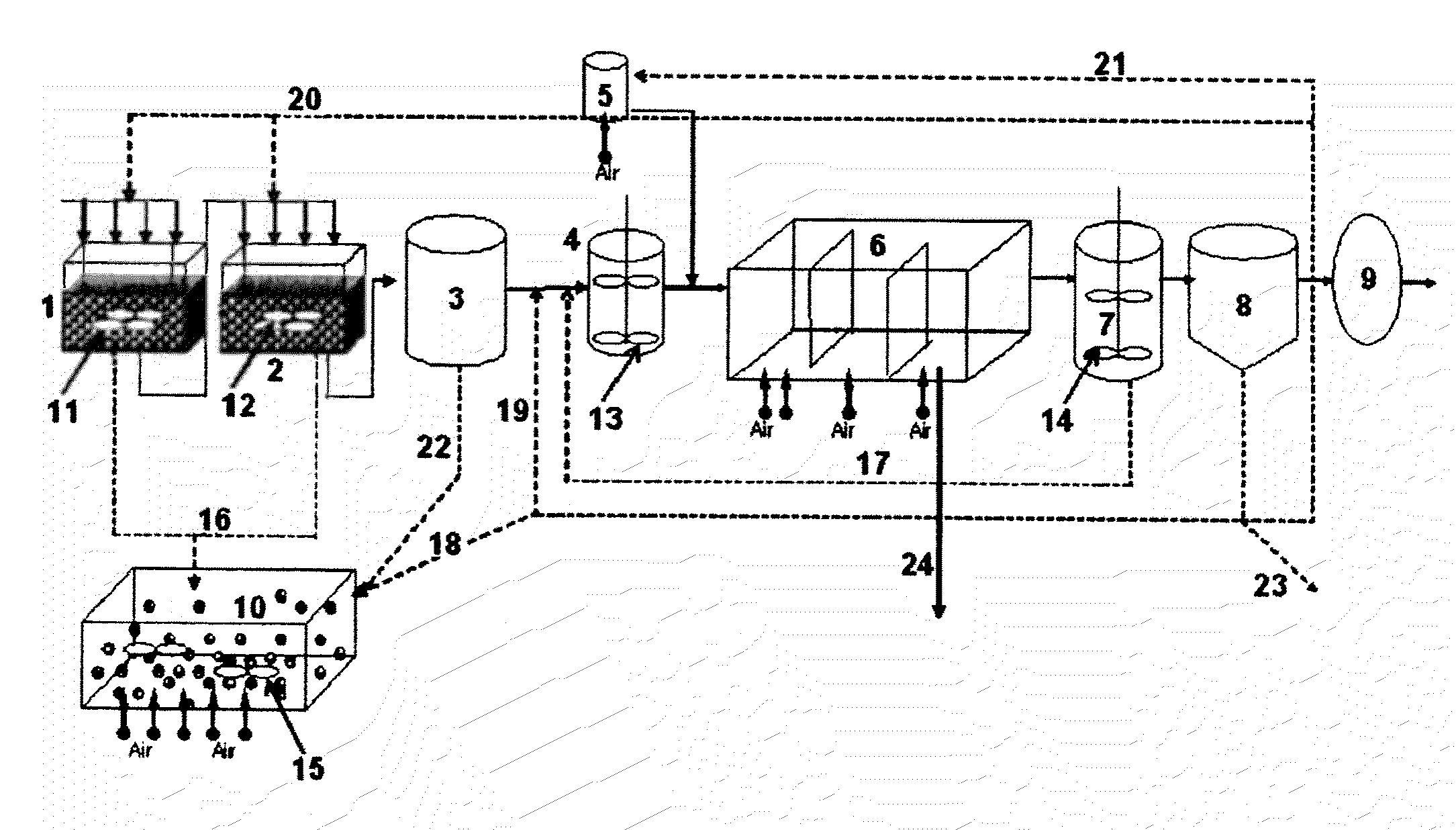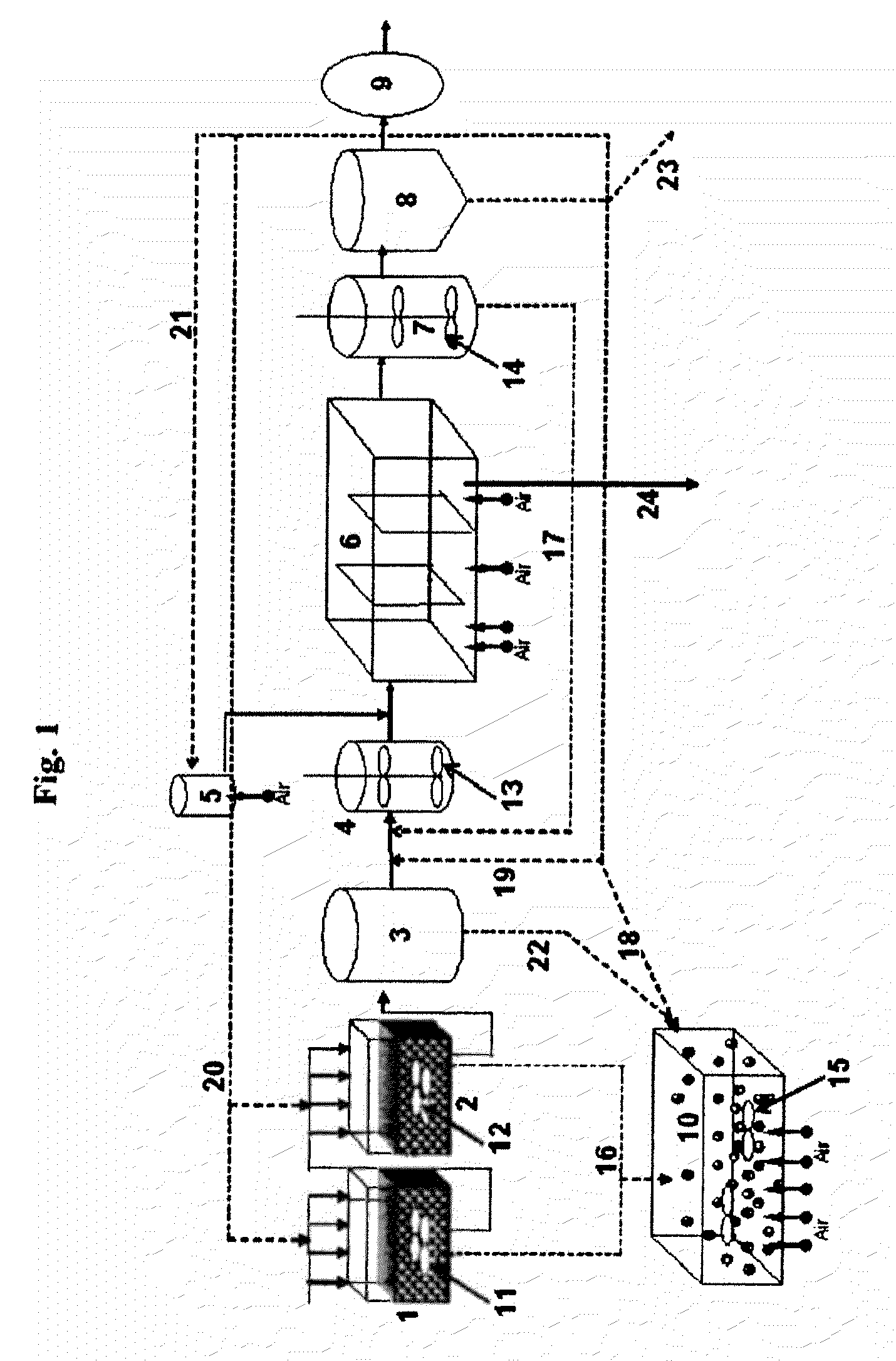Method For Composting And Treating Food Waste By Using Wood Chips And Apparatus Therefor
a technology of wood chips and food waste, which is applied in the field of composting and treating food waste by using wood chips and an apparatus therefor, can solve the problems of difficult treatment, foul odors of reclamation methods, and all leftover food/food waste is reclaimed or incinerated
- Summary
- Abstract
- Description
- Claims
- Application Information
AI Technical Summary
Benefits of technology
Problems solved by technology
Method used
Image
Examples
example 1
[0104]Each reactor used in the apparatus for composting and treating food waste according to the present invention was manufactured from acryl so as to easily allow the observation of the interior of the reactor.
[0105]Table 1 shows the resource and size of each reactor in the apparatus of the present invention. The return line in the apparatus of the present invention was equipped with a transfer pump. Further, an aeration tank and a microbial activation tank were equipped with a ventilator.
TABLE 1Reactor and deviceSizeRemarksFirst wood chip70 l (L = 50 cm, W = 40 cm,Rectangularabsorbing tankH = 40 cm)Second wood chip70 l (L = 50 cm, W = 40 cm,Rectangularabsorbing tankH = 40 cm)Anaerobic tank5 l (d = 16 cm, H = 35 cm)CylindricalAeration tank10 l (L = 33 cm, B = 17 cm,Rectangular, sewage sludgeH = 27 cm)Denitrification tank3 l (d = 14 cm, H = 30 cm)CylindricalPrecipitation tank4 l (d = 23 cm, H = 35 cm)Conical, hopper slope 60°maintenanceMicrobial activation tank0.2 l (d = 0.7 cm, H ...
PUM
| Property | Measurement | Unit |
|---|---|---|
| size | aaaaa | aaaaa |
| temperature | aaaaa | aaaaa |
| temperature | aaaaa | aaaaa |
Abstract
Description
Claims
Application Information
 Login to View More
Login to View More - R&D
- Intellectual Property
- Life Sciences
- Materials
- Tech Scout
- Unparalleled Data Quality
- Higher Quality Content
- 60% Fewer Hallucinations
Browse by: Latest US Patents, China's latest patents, Technical Efficacy Thesaurus, Application Domain, Technology Topic, Popular Technical Reports.
© 2025 PatSnap. All rights reserved.Legal|Privacy policy|Modern Slavery Act Transparency Statement|Sitemap|About US| Contact US: help@patsnap.com


